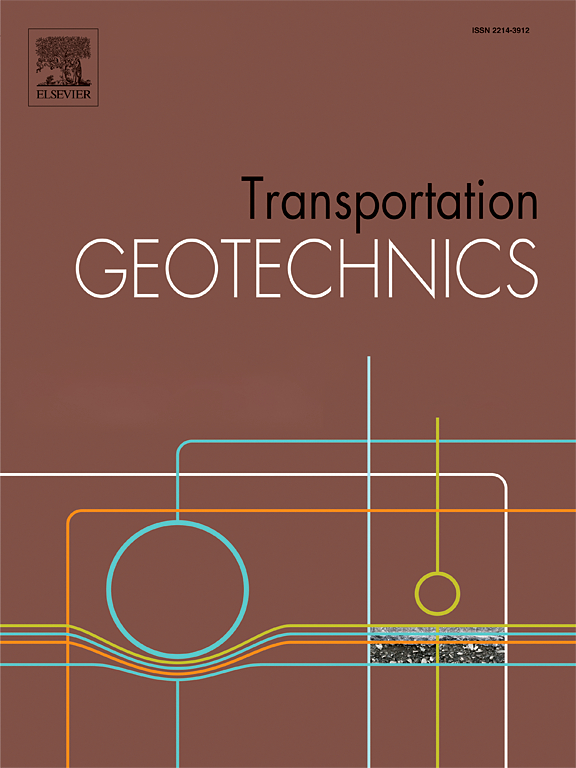Effect of soil arching evolution on tunnel face stability considering spatially variable sandy soils
IF 4.9
2区 工程技术
Q1 ENGINEERING, CIVIL
引用次数: 0
Abstract
Tunnelling, an essential tool of underground space exploration, often encounters the challenge of face instability, especially in spatially variable soils, which poses significant risks to infrastructures. Tunnel face instability frequently manifests through the collapse of soil arching effect. This study explores how the cutterhead framework and soil spatial non-uniformity affect arching evolution and tunnel face stability, by conducting three-dimensional numerical analyses incorporated with random field modelling. The results reveal a strong correlation between face instability and soil arching collapse process. A novel formula was introduced to evaluate the impact of arching effect on face stability, with the maximum arching effect occurring at the limit equilibrium state of tunnel face. Our findings show that the load factor in spatially variable soils is averagely greater than that in uniform soils, indicating potential underestimation of failure risk in uniform soils. Finally, a practical framework is established to estimate the probability of failure for a tunnel face in spatially non-uniform sandy soils based on the factor of safety. This approach provides a significant advancement over traditional deterministic methods for designing face pressure, offering a more nuanced and probabilistic tool for assessing the likelihood of face failure.
求助全文
约1分钟内获得全文
求助全文
来源期刊

Transportation Geotechnics
Social Sciences-Transportation
CiteScore
8.10
自引率
11.30%
发文量
194
审稿时长
51 days
期刊介绍:
Transportation Geotechnics is a journal dedicated to publishing high-quality, theoretical, and applied papers that cover all facets of geotechnics for transportation infrastructure such as roads, highways, railways, underground railways, airfields, and waterways. The journal places a special emphasis on case studies that present original work relevant to the sustainable construction of transportation infrastructure. The scope of topics it addresses includes the geotechnical properties of geomaterials for sustainable and rational design and construction, the behavior of compacted and stabilized geomaterials, the use of geosynthetics and reinforcement in constructed layers and interlayers, ground improvement and slope stability for transportation infrastructures, compaction technology and management, maintenance technology, the impact of climate, embankments for highways and high-speed trains, transition zones, dredging, underwater geotechnics for infrastructure purposes, and the modeling of multi-layered structures and supporting ground under dynamic and repeated loads.
 求助内容:
求助内容: 应助结果提醒方式:
应助结果提醒方式:


